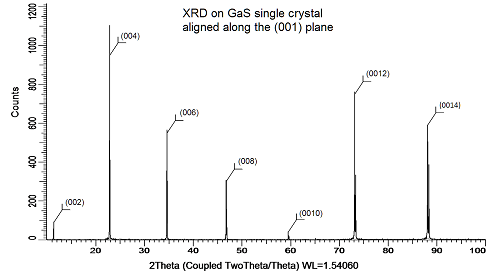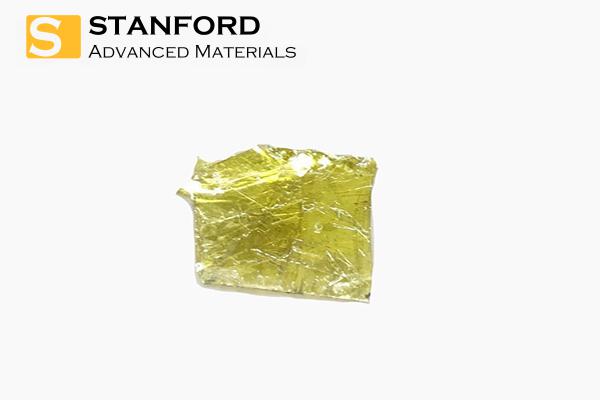Gallium Sulfide Crystal Description
Gallium Sulfide Crystal has been developed by using three different growth techniques, namely Bridgman growth, chemical vapor transport (CVT), and flux zone growth, to optimize grain sizes and reduce defect concentrations. In contrast to the commonly used chemical vapor transport (CVT) technique, flux-grown crystals are well known for their structural perfection and electronic/optical performance. Bridgman and flux zone methods both offer similar grade qualities.
Gallium Sulfide Crystal Specifications
|
Material
|
GaS
|
|
Crystal size
|
~10 mm
|
|
Electrical properties
|
Semiconductor
|
|
Crystal structure
|
Hexagonal
|
|
Unit cell parameters
|
a = 0.360, b = 0.640 nm, c = 1.544 nm, α = β = 90°, γ = 120°
|
Gallium Sulfide Crystal Application
Due to its semiconducting and non-linear optical properties, Gallium Sulfide Crystal has a wide range of largely under-exploited applications.
Gallium Sulfide Crystal XRD

Gallium Sulfide Crystal Packaging
Our Gallium Sulfide Crystal is carefully handled during storage and transportation to preserve the quality of our product in its original condition.
Gallium Sulfide Crystal FAQs
Q1: What is gallium sulfide (GaS)?
Gallium sulfide is a compound of gallium and sulfur, typically found in crystalline form. It belongs to the group of III-VI semiconductors and can exist in different polytypes, including alpha and beta variants.
Q2: What are the properties of gallium sulfide crystals?
GaS crystals are known for their wide band gap, which makes them suitable for optical applications. They exhibit properties such as high optical transparency in the visible and near-infrared spectrum and are also piezoelectric and photoconductive.
Q3: How are gallium sulfide crystals synthesized?
Gallium sulfide crystals can be synthesized through various methods, including chemical vapor deposition (CVD), Bridgman-Stockbarger technique, and vapor transport techniques. The choice of synthesis method can affect the purity, crystalline quality, and properties of the final product.
 Get a Quote
Get a Quote

